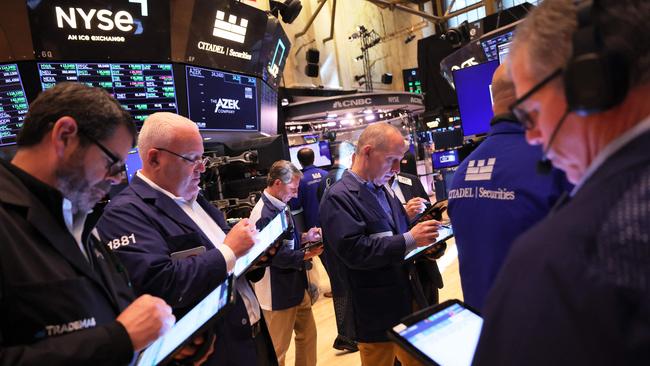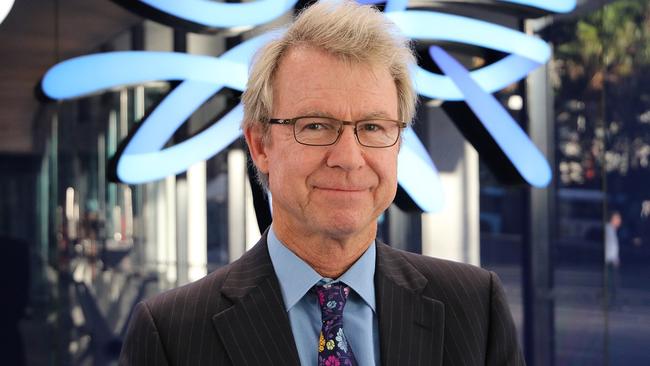Analysts question the sharemarket upside despite rebound
A rebound in shares this week had as much to do with investor positioning as it did to positive signals on the US budget.

Shares have rebounded on hope of a US debt ceiling deal, but analysts are questioning the amount of upside potential amid recession risks after a strong and narrowly based rise in the US market.
The S&P 500 was up 9.3 per cent for the year to date, while the Nasdaq Composite was up 9.3 per cent. Both were at their highest levels in nine months.
Australia’s S&P/ASX 200 was up 3.4 per cent for the year to date. Japan’s Nikkei 225 rose to its highest level in more than three decades as the Bank of Japan held out on interest rate rises.
The rebound in US and Australian shares this week had as much to do with investor positioning as it did to positive signals from US politicians on the budget. There had been no significant “uncertainty discount” applied to US equities, so it’s hard to see much positive reaction to a budget deal.
Indeed, if US politicians don’t reach agreement before the “x-date”, with the US government is expected to run out of money around the start of June, a major sell-off in shares would be likely.
But in the event that there was any sharp sell-off – whether caused by US debt ceiling jitters, hawkish central bank policy or recession indicators – the “contrarian positive” findings from BofA’s monthly fund manager survey are worth bearing in mind.
BofA’s global survey of 289 panellists managing $US735bn ($1.11 trillion) found that fund managers’ average cash level rose to a “high” 5.6 per cent, from 5.5 per cent in April.
The average cash level has remained above BofA’s “tactical buy signal” level of 5 per cent since November 2021. The S&P 500 subsequently entered a bear market amid aggressive interest rate rises in 2022, but bounced 20 per cent from its October 2021 low as US inflation bottomed.

Cash was the biggest overweight and US equities the biggest underweight in the survey.
According to AMP Capital head of investment strategy and chief economist Shane Oliver, sharemarkets could have a further “tactical bounce” if there is a quick US debt ceiling deal.
But in his view the asset class will “continue to look vulnerable” over the next few months.
The rebound in sharemarkets from bear-market lows late last year was driven by evidence of peaking inflation, anticipation that central banks are almost finished with their rate hikes, and so far resilient growth in the major economies and corporate profits despite a slowdown.
But Dr Oliver continues to warn of a “rougher period ahead” for global and Australian shares.
Sharemarket gains so far have been narrowly based, favouring defensive sectors than would be normal at this point in a recovery, and US debt ceiling brinkmanship could create volatility ahead.
US banking stress is continuing in fits and starts, and inflation remains high, leaving potential for more monetary tightening.
Meanwhile, leading economic indicators continue to point to a high risk of recession in the US and Australia, China’s recovery is looking less robust, metal and energy prices have softened with oil down despite several OPEC supply cuts suggesting weakening demand, and the period from May to September is “often rough for shares”.
“We remain of the view that shares will do OK on a 12-month view as central banks ease up, but the next few months are likely to be rough,” Dr Oliver said.
Capital Economics notes that the solid rise in 2023 has been driven by surges in a few “mega-cap” stocks, while most have languished, a trend that it doubts can continue for much longer.
“It is not clear how much the rally in the mega-caps has been driven by optimism about recent breakthroughs in artificial intelligence; lower bond yields; or a view among investors about their resilience to a global downturn,” Capital Economics senior economist Oliver Allen said.
By his reckoning, a portfolio of the five largest stocks in the S&P 500 has returned about 40 per cent in the year to date, accounting for about 80 per cent of the rise in the US benchmark. About 70 per cent of the S&P 500’s constituents have risen in price by less than the index, 50 per cent have fallen in price and 25 per cent have dropped by more than 10 per cent.
“One implication is that investors’ current perceptions of the health of the global economy may not be quite as rosy as the recent gains in the S&P 500 suggest,” Mr Allen said.
“But it also raises the question of whether such a narrow rally in US equities can be sustained.”
A similarly narrow rise in US equities from their early 2020 lows soon broadened out amid unprecedented fiscal and monetary policy stimulus during the pandemic.
It is conceivable something similar could happen again with the rest of the US stockmarket following the mega-caps higher.
However, that would probably require a fundamental improvement in the backdrop for US equities.
Capital Economics thinks that is unlikely, given its view that the US and most other advanced economies will soon enter recessions.




To join the conversation, please log in. Don't have an account? Register
Join the conversation, you are commenting as Logout